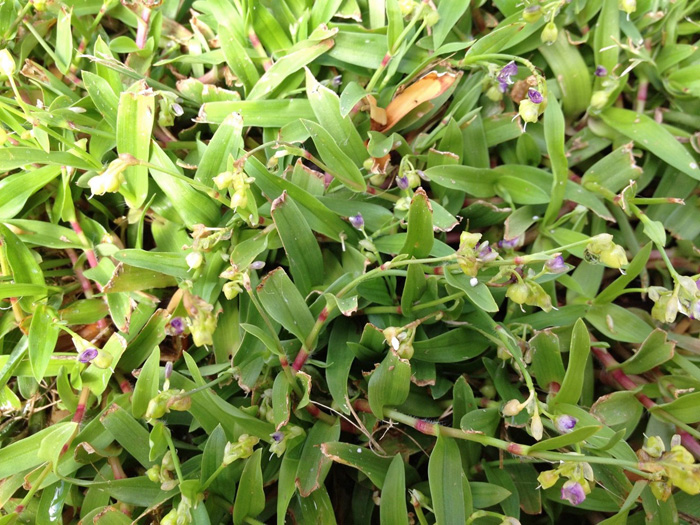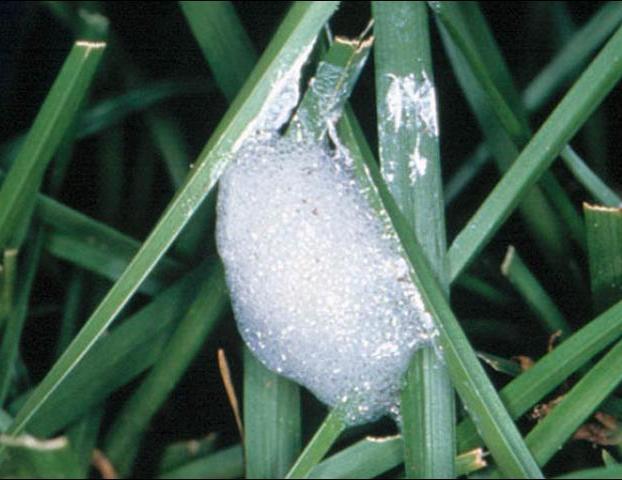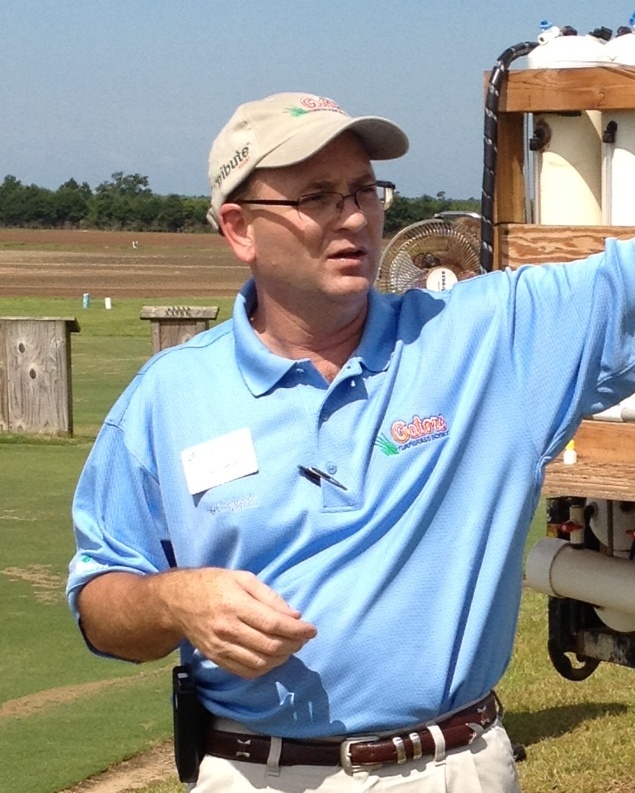
by Larry Williams | Feb 25, 2017
 Florida farmers produce more fresh tomatoes than any other state. Yet Florida home gardeners find it difficult to grow tomatoes. By changing a few basic practices, home gardeners can increase their chances of success.
Florida farmers produce more fresh tomatoes than any other state. Yet Florida home gardeners find it difficult to grow tomatoes. By changing a few basic practices, home gardeners can increase their chances of success.
My philosophy of growing tomatoes in Florida (mixed with science) is outlined below.
First, I choose mostly determinate varieties that have resistance to key diseases.
Most gardeners are used to growing indeterminate varieties. Farmers mostly grow determinate types. Determinate varieties are more compact and produce most of their crop at one time. You can usually harvest all the fruit in two to five pickings and then pull up the plants. Indeterminate varieties, sometimes referred to as “everbearing” tomatoes, set fruit along a vine stem that continues to grow all season.
Correct variety selection is a must for success with tomatoes in Florida.
One reason home gardeners have a difficult time growing tomatoes in Florida is because of incorrect variety selection. Most popular (indeterminate) tomato varieties lack resistance to Tomato Spotted Wilt Virus (TSWV) and bacterial wilt. These two diseases wreak havoc in home as well as commercial plantings. Amelia, a determinate variety that has TSWV resistance, has started showing up in some retail outlets. For a list of other varieties to look for, consult this publication, “Tomatoes in the Florida Garden”.
Secondly, I plant reasonably early – usually after April 1 (maybe earlier this year due to warm late winter). Tomato plants grow best when temperatures exceed a specific base temperature for a certain number of days (referred to as heat units or degree days). Tomatoes are heat-loving plants that need a long warm growing period to grow from seed to fruit. Optimum fruit set occurs within a narrow night temperature range. Tomatoes produce the largest yields of highest quality fruits when day temperatures are in the range of 80 to 85ºF and when night temperatures remain above 62 but below 72ºF.
Thirdly, I fertilize to produce a healthy, sturdy plant when the plant is young. With the first open flowers, I reduce fertilization (particularly the nitrogen) to about half the original rate. When the first fruits are about two inches in diameter, I reduce fertilization a little more. Once I harvest the first tomatoes, I further reduce the fertilizer to about ¼ the original rate or completely quit fertilizing. Many home growers fertilize tomatoes too much. This results in a big green plant with few tomatoes. This reduction in fertilization is mainly important with the amount of nitrogen being applied. The plant still benefits from adequate potassium.
There are two basic phases of growth in plants – vegetative and reproductive. When a tomato plant begins to produce flowers, it is becoming sexually mature (switching from a vegetative phase of growth to a reproductive phase of growth). Just remember that as plants mature and fruit, the demand for nitrogen decreases. Excessive nitrogen can reduce fruit set and development. Too much nitrogen keeps the plant in a vegetative phase of growth resulting in a big, overly vigorous, green plant with few to no fruit.
As heat, humidity, rains, diseases and insects increase during summer months, tomato production declines. Entire plants may begin to die. At this point, I’m thankful for any production I got. I do away with the plants and find something else to do other than grow tomatoes.

by Carrie Stevenson | Dec 4, 2015

______________________Figure 1. Doveweed patch in St. Augustinegrass sod.__________________________
Ramon Leon, WFREC Weed Specialist
Doveweed (Murdannia nudiflora) is a summer annual weed species that belongs to the dayflower family. Over the last three years, this weed has become an important weed problem in residential lawns and sod production.
This weed has two key characteristics that make it successful. First, its seeds germinate late during the spring when soil temperatures reach 65-70°F. This represents a problem because at this time the effect of preemergence (PRE) herbicides applied in February or March might be too low to provide good doveweed control. Second, the leaves of this weed can be confused with St. Augustinegrass and centipedegrass leaves, and many people do not notice doveweed until the plants are large and are displacing the turf. Doveweed leaves are thick with a shiny rubbery texture. The plant produces creeping stems (stolons), and mowers can break these stolons spreading this weed across the field.
It is very important to keep in mind that doveweed prefers wet areas, so drainage issues or over-watering will favor the establishment and growth of this weed. For this reason, ensuring irrigation is not excessive is a key management practice to control this problem. Another cultural practice that plays a major role on doveweed management is mowing. Mowing too short and too frequently will favor doveweed because its leaves will grow horizontally avoiding the mower blades. Chose a mowing height that allows good ground cover , yet only removes a third of the turf leaf blades.

___________Figure 2. Individual doveweed plant showing flowers, fruits, and stolons with root in nodes.________
Control
Doveweed is easier to control before emergence than when plants are well established. Atrazine is one of the most effective herbicides to control doveweed. A maximum rate of 1 lb. of active ingredient (ai) per acre (A) and no more than 2 lb. ai per year are recommended to achieve both adequate control and avoid turfgrass injury. Atrazine should be applied right before or soon after doveweed emerges to maximize control.
For PRE control, S-metolachlor (Pennant Magnum™), dimethenamid-P (Tower™), and indaziflam (Specticle™) are herbicides that can considerably reduce doveweed establishment, especially if the application is done closer to doveweed emergence timing. These herbicides also provide good control of other important weed species such as crabgrass and goosegrass, which emerge earlier in the spring. In order to control early emerging weeds and doveweed, split applications are preferred. For example, the first application is done at the end of February or early March and the second one 4 to 6 weeks after. In this way, we can extend PRE control until doveweed starts emerging.
If we observe doveweed emerging after PRE applications, we have several postemergence (POST) herbicides that will provide control, as long as the plants are less than 2 inches in size and have not produced stolons. Products containing 2,4-D and dicamba can provide fair control of doveweed. However, repeated applications or applications in combination with other herbicides will be required for adequate control. There are commercial products with formulations that combine 2,4-D or dicamba with other herbicides such as mecoprop-p, carfentrazone (Quicksilver™), thiencarbazone and iodosulfuron (e.g., Celsius™, Tribute Total™). This type of three− or four−way combination can provide enhanced doveweed control. If doveweed has fully displaced the turf in spots, it is probably easier and more effective to kill doveweed with a directed application of glyphosate (RoundUp™) and re-seed or re-sod the area.
Because doveweed seeds can live for several years in the soil, it will take two to three years of continuoous control to eliminate doveweed populations. Although herbicides are useful tools to control doveweed, the most important factor to prevent doveweed problems is to have vigorous healthy turf. Doveweed requires a lot of sunlight, so if the turf effectively shades the ground, doveweed will have a hard time growing and producing new seed.
For more information on managing turf weeds download:
by Sheila Dunning | Sep 16, 2015
“We have replaced this grass several times over the past few years; and it’s dying again.” I have heard this complaint too many times this summer. Last summer’s heavy rain, the stress of January’s icy weather, and this year’s extended summer have contributed to widespread outbreaks of Take-All Root Rot, a soil-inhabiting fungus Gaeumannomyces graminis var. graminis.

Symptoms of Take-All-Root-Rot. Photo credit: Sheila Dunning, UF/IFAS.
This disease causes yellow grass patches ranging in diameter from a few inches to more than 15 feet. The symptoms first appear in the spring, but the disease can persist all summer and survive the winter. Over time, the entire area dies as the root system rots away. The pathogen is naturally present on warm-season turfgrass roots. High rainfall and stressed turfgrass trigger the disease.
Since the roots are affected, they are not able to efficiently obtain water or nutrients from the soil, nor are they able to store the products of photosynthesis, which result in the loss of color in the leaves. By the time the leaf symptoms appear, the pathogen has been active on the roots for several weeks, probably longer; the disease has been there potentially for years. If the turfgrass is not stressed, leaf symptoms may never be observed.
This disease is very difficult to control once the aboveground symptoms are observed. Measures that prevent or alleviate stress are the best methods for controlling the disease. Any stress (environmental or manmade) placed on the turf weakens it, making it more susceptible to disease. Remember, that every maintenance practice, fertilizer application, and chemical (especially herbicide), application has an impact on turfgrass health. Cultural practices that impact the level of stress experienced by a lawn include:
- proper turfgrass species selection
- mowing at the correct height
- irrigation timing, frequency and volume
- fertilizer: nitrogen and potassium sources and application quantities
- thatch accumulation, and
- soil compaction
The selection of turfgrass species should be based on existing soil pH, sunlight exposure, use of the area and planned maintenance level.
Mower blades must be sharp to avoid tearing of the leaves. Additionally, turfgrasses that are cut below their optimum height become stressed and more susceptible to diseases, especially root rots. When any disease occurs, raise the cutting height. Scalping the grass damages the growing point. Raising the cutting height increases the green plant tissue available for photosynthesis, resulting in more energy for turfgrass growth and subsequent recovery from disease.
If an area of the lawn has an active fungus, washing or blowing off the mower following use will reduce the spread of the disease to unaffected areas.
The amount of water and the timing of its application can prevent or contribute to disease development. Most fungal pathogens that cause leaf diseases require free water (rainfall, irrigation, dew) on the leaf to initiate the infection process. Irrigating every day for a few minutes is not beneficial for the turfgrass because it does not provide enough water to the root zone, but it is beneficial for turfgrass pathogens. It is always best to irrigate when dew is already present, usually between 2 and 8 a.m., and then only apply enough water to wet the root zone of the turfgrass.
Excessively high nitrogen fertility contributes to turfgrass diseases. The minimum amount required for the grass species should be applied. Potassium (K) is an important component in the prevention of diseases, because it prevents plant stress. Application of equal amounts of nitrogen and potassium is recommended for turfgrass health. When turfgrass roots are damaged from disease, it is beneficial to apply nutrients in a liquid solution. However, nitrate-nitrogen increases the severity of diseases, so their use should be avoided when possible. Ammonium-containing fertilizers are the preferred nitrogen sources.
Heavy liming has also been linked to increases in Take-All Root Rot. Since most turfgrasses can tolerate a range of pH, maintaining soil at 5.5 to 6.0 can suppress the development of the pathogen. When the disease is active, frequent foliar applications of small amounts of nutrients is necessary to keep the turfgrass from declining.
Additional maintenance practices that need to be addressed are thatch removal and reduction of soil compaction. Excessive thatch often causes the mower to sink which can result in scalping and reducing the amount of leaf tissue capable of photosynthesizing. Thatch and compacted soil prevent proper drainage, resulting in areas remaining excessively wet, depriving root systems of oxygen. Since recovery of Take-All-Root-Rot damaged turfgrass is often poor, complete renovation of the lawn may be necessary. Removal of all diseased tissue is advised.
As a native soil-inhabiting pathogen, Take-All-Root-Rot cannot be eliminated. However, suppression of the organism through physical removal followed by proper cultivation of the new sod is critical to the establishment of a new lawn. Turfgrass management practices, not chemicals, offer the best control of the disease.
It is acceptable to use fungicides on a preventative basis while rooting in the sod. Azoxystrobin, fenarimol, myclobutanil, propiconazole, pyraclostrobin, thiophate methyl, and triadimefon are all fungicides that can be utilized to prevent disease development while having to excessively irrigate newly laid sod. Ideally, the turf area should be mowed and irrigated prior to a fungicide application. Unless the product needs to be watered in, do not irrigate for at least 24 hours after a chemical treatment. Do not mow for at least 24 hours, to avoid removal of the product attached to the leaf blades.
With all the stresses that our lawns have experienced, it is very important to continue monitoring the turf and be cautious about the cultural practices being used. Take-All Root Rot is likely to flourish. Do not encourage its development. A pathology test with the University of Florida Laboratory can confirm the presence of the disease causing organism. Before resodding again, have the dying sod tested.
For information and the submission form go to:
Sample Submission Guide
For more information on the disease go to:
Take-All-Root-Rot

by Blake Thaxton | Jun 12, 2013

Credit: Lyle Buss, University of Florida
In recent weeks Spittlebugs have been found everywhere in the western parts of the panhandle. Spittlebugs are the little black and orange insects you find everywhere in early June. The adult spittlebug is about 1/4 inch long and has two orange lines across its back. You may notice them flying on you while you mow the lawn.
The immature spittlebugs called nymphs, are usually found in a foamy white mass that characterizes the name of the insect. The spittle mass is for protection of the nymphs from predators and desiccation.

Credit: E. A. Buss, University of Florida
The spittlebug can cause injury to ornamental turfs and other ornamental plants. The adults feed on turf, centipede is the turf of choice. When feeding, the insect injects a toxin into the leaf blade with its piercing/sucking mouthparts. The pierced leaf blade will take on purple, white, or yellow stripes along the turfgrass blade vertically. Heavy infestations are best identified by a combinations of finding the injury, spittle masses, and large numbers of adults present.

Credit: Larry Williams, UF/IFAS
Recently spittlebugs have been spotted across many counties in the panhandle. Many have brought them to the extension offices for identification and treatment recommendations. Identification is the correct first step when having an IPM or Integrated Pest Management approach to insect control.
Bryan Unruh Ph.D is the UF/IFAS turf specialist stationed in Jay at the West Florida Research and Education Center. Dr. Unruh posted on Facebook about Spittlebugs and the post read:

Dr. Bryan Unruh, UF/IFAS

Sticking to an IPM plan, at this current date spittlebug damage has not met the aesthetic threshold to put a control plan in place. Once the threshold has been met then cultural, mechanical, an chemical techniques need to be discussed to best take care of the issue. Since Dr. Unruh commented on spittlebugs there has been a dramatic increase in rainfall, so we can expect for the spittlebugs, to stay around a while longer. If you think you have an infestation that warrants treatment, call your local extension agent for treatment options.
by Blake Thaxton | Apr 12, 2013

UF/IFAS NW District Extension agents and the UF/IFAS West Florida Research and Education Center have joined forces to provide relevant hands on training for the Small Farmers of northwest Florida and surrounding areas by developing the Gulf Coast Small Farms and Alternative Enterprises program. This Spring Field Day will be a sneak peek at what the program will offer in the coming months and years.
Join us to discover new production practices and opportunities for your small farm or fruit and vegetable gardens!
Topics and Demonstrations:
- Irrigation Practices
- Small Farm Integrated Pest Management
- Hydroponic Float Bed Lettuce
- Protected Agriculture
- Food Safety Issues for the Small Farm

Register here: Gulf Coast Small Farms & Alternative Enterprises
For more information please contact:
Robin Vickers at 850-393-7334 or rvickers@ufl.edu
Blake Thaxton at 850-623-3868 or bthaxton@ufl.edu

 Florida farmers produce more fresh tomatoes than any other state. Yet Florida home gardeners find it difficult to grow tomatoes. By changing a few basic practices, home gardeners can increase their chances of success.
Florida farmers produce more fresh tomatoes than any other state. Yet Florida home gardeners find it difficult to grow tomatoes. By changing a few basic practices, home gardeners can increase their chances of success.








